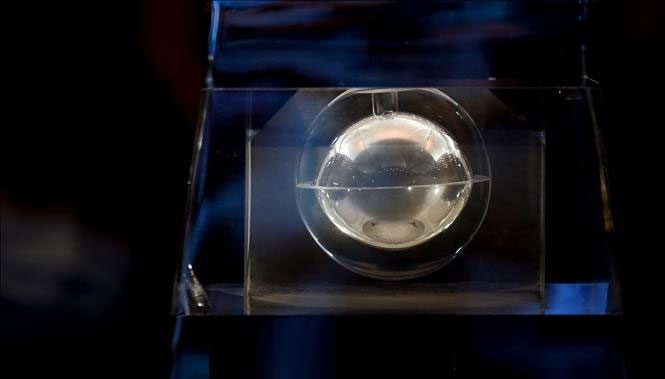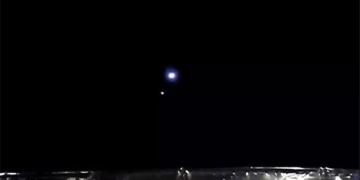Samples from the Moon brought back by China’s Chang’e 5 probe have helped researchers gain a better understanding of the effects of latitude on space weather.
The impacts of micrometeorites and solar wind radiation are the predominant space weathering processes and are key factors causing changes in the composition and micro-mix of lunar soil. Unlike weather on Earth, the concept of “space weather” refers to the environmental conditions in near-Earth space, including magnetic fields, radiation rays, and material ejected from the Sun.

Lunar soil samples collected by the Chang’e 5 spacecraft are displayed at the National Museum in Beijing, China, on February 28, 2021. (Photo: AFP/TTXVN).
The Chinese Academy of Sciences (CAS) reported that a team of researchers has clarified the space weather characteristics of various minerals from a single basalt layer that the Chang’e 5 mission brought back. Through sample analysis, the researchers found that space weather characteristics depend on the types of primary minerals present.
According to a research report published in the journal Geophysical Research Letters on April 15, scientists employed a range of analytical methods to gather morphological, mineralogical, and crystallographic information on the aforementioned basalt layer— a typical lunar soil sample collected by the Chang’e 5 mission, in which most of the constituent minerals were clearly visible on the surface.
Mr. Gu Lixin, a researcher at CAS and the lead author of the report, emphasized that understanding the processes and mechanisms of space weathering is particularly important for comprehending the material evolution of the lunar surface and the space environment.
The study also indicated that the lunar soil samples collected by the Chang’e 5 mission do not show significant differences in microstructure compared to the soil samples previously brought back by the U.S. Apollo program. According to scientists, this suggests that latitude has little impact on space weather on the Moon.
The Chang’e 5 probe returned to Earth on December 17, 2020, collecting a total of 1,731 grams of samples from the Moon, primarily consisting of rocks and soil from the lunar surface.





















































